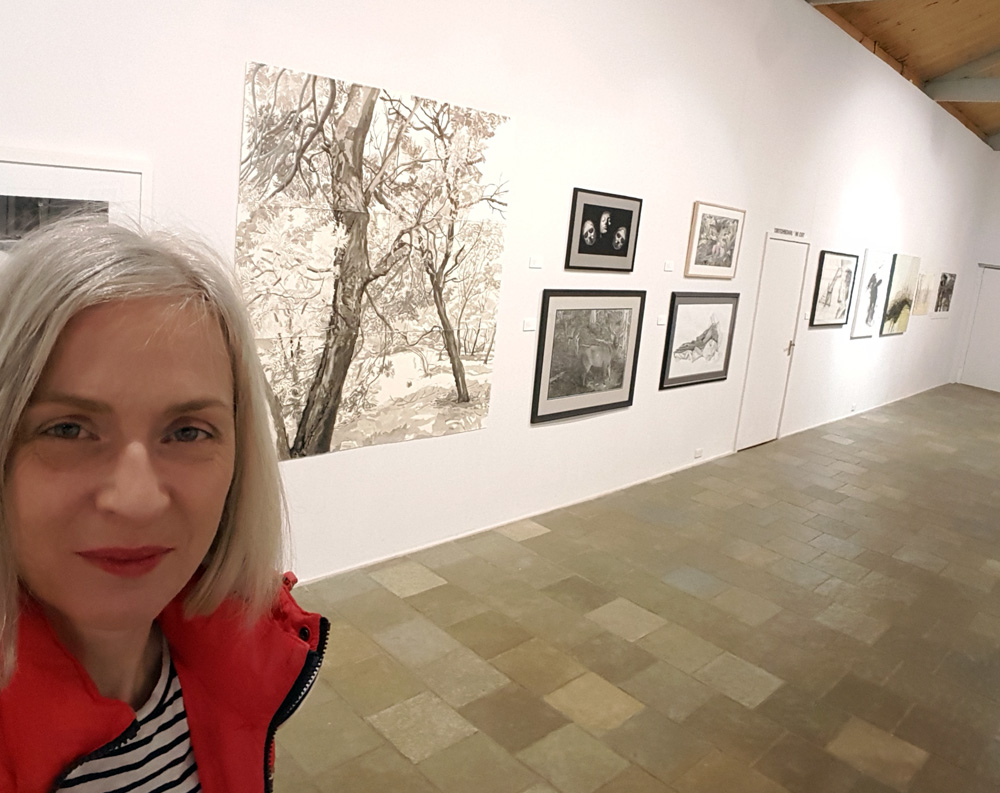Arc Yinnar Biennial Drawing Prize
October 15 – November 26, 2016

There’s a converted butter factory in a small town tucked into the green rolling foothills of the Strzelecki ranges, where the main street is wide and cars are parked at 45 degree angles. Anyone who can spell Strzelecki must be a local. This is Yinnar on the doorstep of the still-operating Hazelwood coal-fired power station, subject of much debate and despair.
There’s a Drawing Prize here of national repute. Despite the rhetoric of demographic disasters: job losses, mine fires, pollution, asbestos and the rest, Arc Yinnar an artist run venture has been operating for 32 years. As well as hosting a national prize, it boasts two galleries, public access facilities for printmaking, ceramics, metalwork, photography, painting and drawing, a retail outlet, theatrette and private studios. All this on a shoestring grant of $3000. When the lights go out at Hazelwood, this sort of cooperative venture is what keeps communities afloat and shores up their identity. Its funding should be assured for the long term, but I am told it is reduced every year and tied to utilitarian outcomes.
A drawing show throws up immediate questions; how much drawing is going on, what do people draw and what do they draw for – preparation to paint, clarifying ideas, rendering an object? And who is doing the drawing? Are these artists I will be familiar with from painting shows? Drawing is often a way in – to art, to subject matter, to ideas. Its nature is provisional, easily adjusted, erased or discarded. Paper is reasonably cheap. It buys a certain freedom from getting things right.
Forty-two works are hung in a large rectangular room with no natural light and coming in from the intense Australian sun it can take a moment to adjust. What you see is mostly medium sized work, the largest and most immediately striking being Elizabeth Nelson’s lovely At the Big Rock, a work on several of paper placed together, in ink on paper. Its range of tones adds up to a lambent sense of the light under trees, with a composition that entices the eye in and through the scrub.

This work sets the note for the rest: nature or organic forms are the predominant subject in this show, and the overwhelming majority of the artists are women. Just four of the works are by men. What is going on? Don’t men draw? Do they all prefer the swaggering outsized canvas loaded with bravura brushstrokes? Certainly many do – size does still matter, it seems. You may have to check with Freud, but perhaps there is something about a sense of display -usually evident in fast cars and flashy watches – in male artists’ penchant for huge colourful thick paintings. But both the judges of this show are men; successful and well respected professionals in the field of drawing (John Wolseley and Geoffrey Dupree). I am at a loss to account for the disparity, and slightly uneasy at the art world’s recurrent ability to produce male judges and female exhibitors.
There is a range of approaches to drawing here– the highly rendered object, the expressive line work, the moody depths of tone. Mark, form and composition are the elements that must be coerced into resolution in a successful drawing and it’s a challenge that has inspired pictures as diverse as the semi abstraction of Chinese ink paintings to the fine rendering of Durer’s evocative Young Hare (1502) or the tonal complexities of a Pirenesi. One problem in the rendering approach is to how to make a composition out of an object and some of the artists here struggle with that. The wallpaper approach – extending or repeating the object to fill the sheet is not usually successful. Pictorial space is always as much the subject of a drawing as any object in it.

Kathryn McGovern’s “Tumbling Four” combines the illustrative and the expressive in a small and beautiful watercolour. Her juxtaposition of the arrested vitality of a running rabbit with the slow drift of autumn leaves is mesmerising. Completely different in style are the line works of the figure by Isobel Clement and Emmy Mavroidis, demonstrating both an empathy with form and a high level of skill. A haunting delicacy is present in Kate McGuiere’s Shed Skin and Josephine Jakobi’s Morgan’s Landing. Mark Dober combines both delicacy and strength in his Garden Drawing 7

The winning work by Marie Ward is a drawing on a cylindrical support about the size of a postal tube, mounted on a plinth. Both image and object; part totem, part landscape, the image of a tree rises and coils up the support. It’s intriguing and minutely worked; the tree seems ancient and rises from hints of landscape at the base. An Eastern sensibility is present, not only in the ancient gnarled tree forms, but because of the combination of object and image which seems to allude to a ceramic tradition. It’s a complex and convincingly resolved piece.
It is often remarked that a drawing takes you closer to the artist than any other media. There is a transparency, an unmediated directness in drawing which is revealed through touch and the spare nature of the materials. Drawing allows no refuge, no disguise, no fancy dress. These artists have given us of themselves.
Long live the Arc.
Alexandra Sasse
Disclaimer: Alexandra Sasse won Second Prize in this exhibition. See image here
——————————————————————————————————————————-
